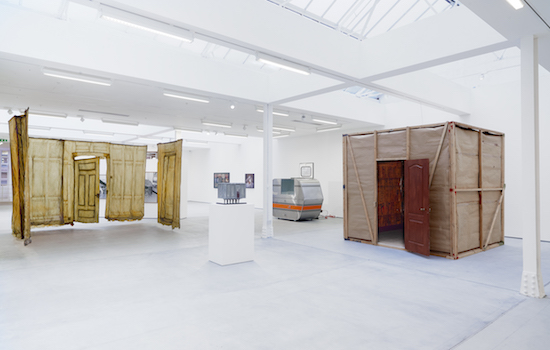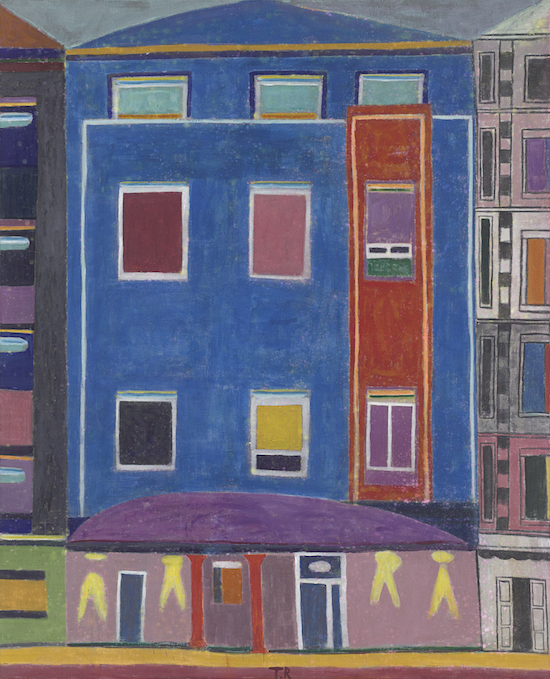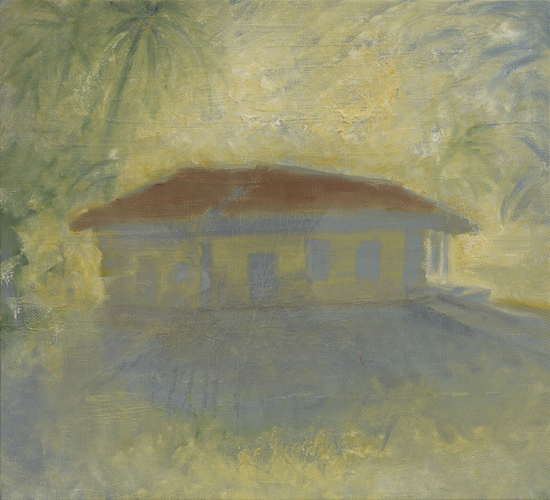In The Poetics of Space, first translated into English in 1964, Gaston Bachelard wrote: ‘a house that has been experienced is not an inert box. Inhabited space transcends geometrical space.’ This seminal phenomenological study investigates the significance of intimate spaces which govern our dreams and emotions. Bachelard scrutinises the rooms within a house and different types of furniture that occupy these interiors; attics, cellars, corners, drawers, wardrobes, nests and shells are all explored as integral parts to the subjectivity experienced in domestic environments. To illustrate that ‘all really inhabited space bears the essence of the notion of home’, examples of literary images found in poetry are utilised and emphasise his argument that the home is a manifestation of its inhabitant’s heart, soul and memories.
For Bachelard, ‘memories of the outside world will never have the same tonality as those of home and, by recalling these memories, we add to our store of dreams’. Certain parts of a house recall past experiences and particular objects can trigger intense connections; drawers may contain secrets, corners can provide respite and wardrobes might open up other worlds. Different facets of one’s existence are illuminated by these familiar spaces, thus making the home both a complex and consistent entity.
This multifarious analysis of domestic interiority, which Bachelard dubbed ‘topoanalysis’, was recently explored in the exhibition Room at Sadie Coles HQ. By taking Bachelard’s theories further and placing them in the context of work specifically by female artists, the exhibition addressed the implications of a space historically considered to be a ‘female’ sphere. The exhibition featured contemporary installations and photographic work which particularly respond to the diverse roles played by rooms and how they can function as both physical and psychological spaces.
Francesca Woodman’s diminutive and ethereal black and white photographs of dilapidated interiors are juxtaposed with Marvin Gaye Chetwynd’s open and inviting installation, Folding House (2017). Other interpretations of rooms, such as Louise Bourgeois’s Cell XVII (Portait) (2000), appear to convey entrapment, isolation and rage; a solitary bust with desperate, screaming eyes seems to allude to the mental anguish of the situation and an uncomfortable state of dissociation.
Sarah Lucas’s installation Chuffing Away to Oblivion (1996) feels just as disconcerting and suffocating – not least because of the nicotine-stained walls papered with tabloid pages and soft porn. There was certainly a sense that you had stumbled upon a masculine hideaway and discovered their secret stash of porn. Perhaps this was not quite what Bachelard was alluding to with his ‘topoanalysis’, but it does raise questions around gender relations, perception and addiction. Andra Ursuta’s T, Vladimerscu Nr. 5 Kitchen (2013) is similarly a recreation of a room, in this case, that of Ursuta’s own childhood home. Despite the dollhouse-like stature of this piece and the charm of such tiny furniture, these interiors are rather bleak and ascetic.

Installation view, Room, Sadie Coles HQ, London, 13, Copyright the artist, courtesy Sadie Coles HQ, London
Penny Slinger’s playful collages offer a surreal take on the strange beauty that can emerge from domestic spaces. Giant books spill off shelves, grandfather clocks are congregated in such a way to face the viewer and a naked woman carefully walks across a tightrope. Like the chests and drawers in Bachelard’s work, Slinger appears to be interpreting the ways in which these spaces can encourage the confidence to explore fantasies and one’s own imagination. Heidi Bucher’s Untitled (Herrenzimmer) (1979) can also be understood through the lens of Bachelard’s theories of the home as an indicator of memories. Using gigantic latex sheers, Bucher imprinted the façade of her father’s study to create a large ‘room skin’. By recreating a shell of her father’s room, Bucher could re-evaluate her history within this space and reflect on how it affected her relationship with her father.
While Room drew on photographic pieces and installations, House Work almost entirely features drawings and paintings. On display at Victoria Miro Mayfair, this is also a group exhibition that examines idea of the home ‘as a social construct, idea or state of mind.’ These are not just places for sleeping or eating in, but ones in which you grow up, retreat to or aspire for. House Work may not explicitly focus on the female experience within domestic interiors, but it shares several themes with the threads that run through Room.
Grayson Perry’s sketches are characteristically full of humour and whimsy. They sprung to mind Bachelard’s meditations on the psychological studies of houses drawn by children: ‘All great, simple images reveal a psychic state. The house, even more than the landscape, is a "psychic state," and even when reproduced as it appears from the outside, it bespeaks intimacy.’

Tal R, Blue moon, 2015 Courtesy the Artist and Victoria Miro, London (Photo: Anders Sune Berg) © Paradis/Tal R, Copenhagen
There are plenty of depictions of domestic exteriors and frontages in House Work, more so than in Room, which call to question the buildings that we call home as all-inclusive and absolute spaces. Karen Kiliminik’s The summer house of Apollo in the French countryside outside of Paris (2016) feels dream-like and twee – a location that wouldn’t be out of place in a children’s book. The structure itself was the former home of Empress Joséphine and Kiliminik’s decision to capture it suggests an attempt to directly connect with the past and address the differences between fantasy and reality.
Kiliminik’s lavish and bright painting is a stark contrast to David Rayson’s Patio (1998). Once you get past Rayson’s impressive and meticulous attention to detail, you notice the austere atmosphere he captures in this image of suburbia. A cloudy sky casts a dark shadow over the entire garden and its surrounding houses; the titular patio sits along the bottom of the canvas in such a way that you begin to wonder if this well-kept garden could be covering up a more ominous presence.
Further tension could be found in Mamma Andersson’s Pigeon House (2010); the painting could quite easily be a scene in a film as three figures sit around a table and avoid eye contact. The use of different textures and opacities of paint indicate a silent unease that often arises between inhabitants who share a space. The ‘topoanalysis’ explored by Bachelard did not argue that all associations with the home were positive, but I think that both these exhibitions have succeeded in presenting a varied response to such liminal spaces.
Whether it is a sinister space that needs to be escaped or a tranquil dwelling place, the home is captured in a myriad of ways. The simple, yet composite narratives that are contained in these exhibitions ensure that the domestic space is reflected as authentically as possible, in all its forms; ‘as a place of retreat, an index of style, a site of display, a metaphor for the mind, an expression of the mundane, or a vessel for the uncanny.’
Room was at Sadie Coles until 18 February. House Work is at Victoria Miro until 18 March


